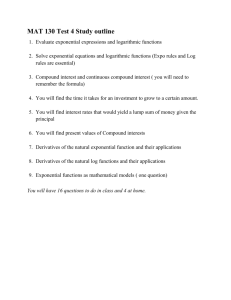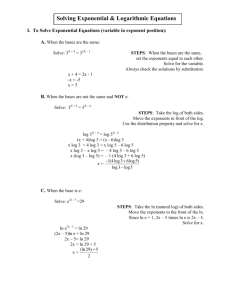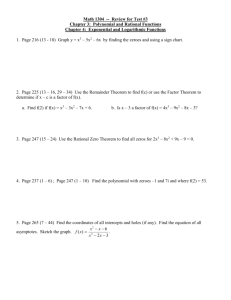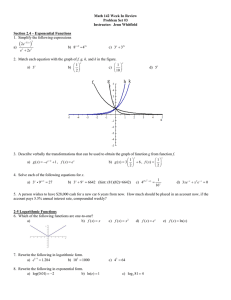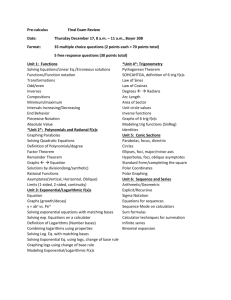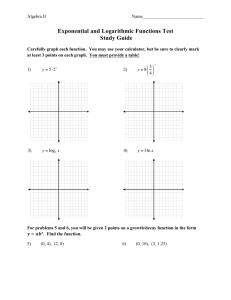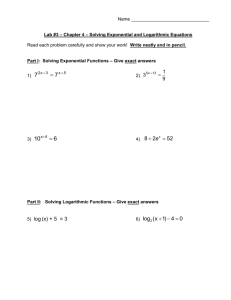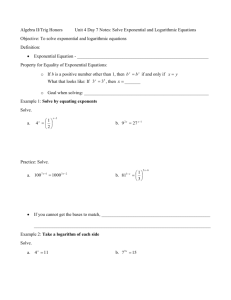Change in a quantity y between time a and time b = Value of
advertisement
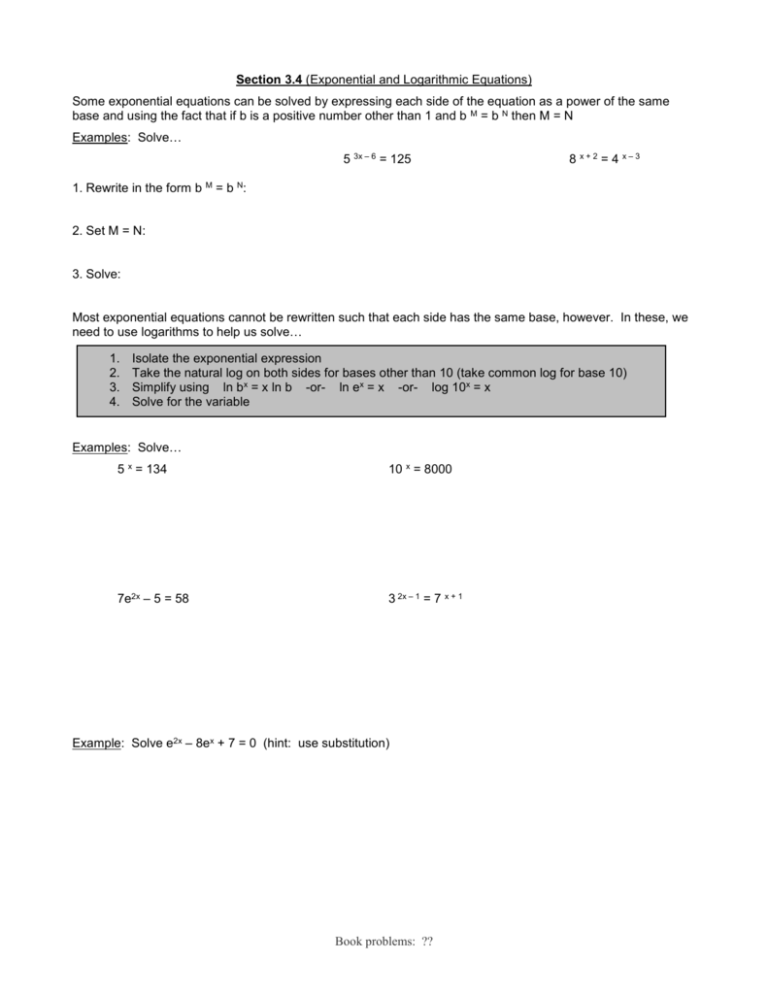
Section 3.4 (Exponential and Logarithmic Equations) Some exponential equations can be solved by expressing each side of the equation as a power of the same base and using the fact that if b is a positive number other than 1 and b M = b N then M = N Examples: Solve… 5 3x – 6 = 125 8 x+2 = 4 x–3 1. Rewrite in the form b M = b N: 2. Set M = N: 3. Solve: Most exponential equations cannot be rewritten such that each side has the same base, however. In these, we need to use logarithms to help us solve… 1. 2. 3. 4. Isolate the exponential expression Take the natural log on both sides for bases other than 10 (take common log for base 10) Simplify using ln bx = x ln b -or- ln ex = x -or- log 10x = x Solve for the variable Examples: Solve… 5 x = 134 10 x = 8000 7e2x – 5 = 58 3 2x – 1 = 7 x + 1 Example: Solve e2x – 8ex + 7 = 0 (hint: use substitution) Book problems: ?? We can also solve equations involving logarithmic expressions. One method for doing this involves using the definition of logarithmic functions and their conversion to exponential expressions Example: Solve… log 2 (x – 4) = 3 4 ln (3x) = 8 1. Rewrite in the form log b M = c: 2. Rewrite in exponential form: 3. Solve for the variable: 4. Check proposed solutions (include only values where M > 0) Remember that logarithmic functions are only defined for positive real numbers (check solutions and exclude any solution that produces the log of 0 or a negative number) Example: Solve: log x + log (x – 3) = 1 Similarly to exponential expressions, some logarithmic expressions can be expressed as log b M = log b N where the bases on both sides of the equation are the same and thus, M = N 1. Express equation in form log b M = log b N and M = N 2. Solve M = N for the variable 3. Check proposed solutions in original equation (include only values for which M > 0 and N > 0) Example: Solve: ln (x – 3) = ln (7x – 23) – ln (x + 1) Example (with time or for extra credit): How long, to the nearest tenth of a year, will it take $1000 to grow to $3600 at 8% annual interest compounded quarterly? Hint: Use formula from section 3.3: A = P(1 + r/n)nt Book problems: ??
